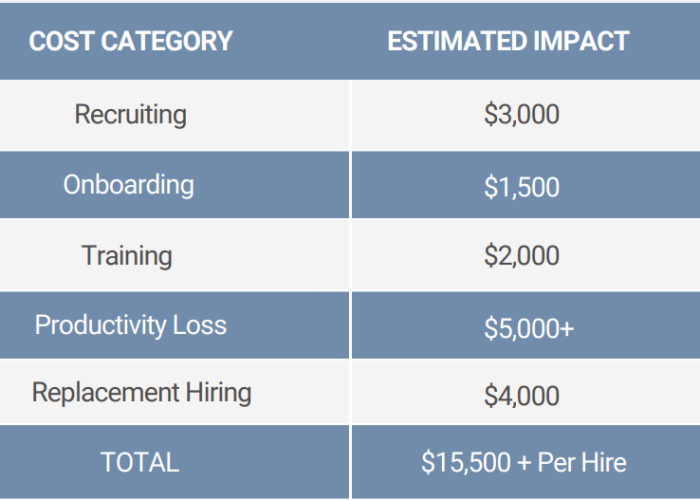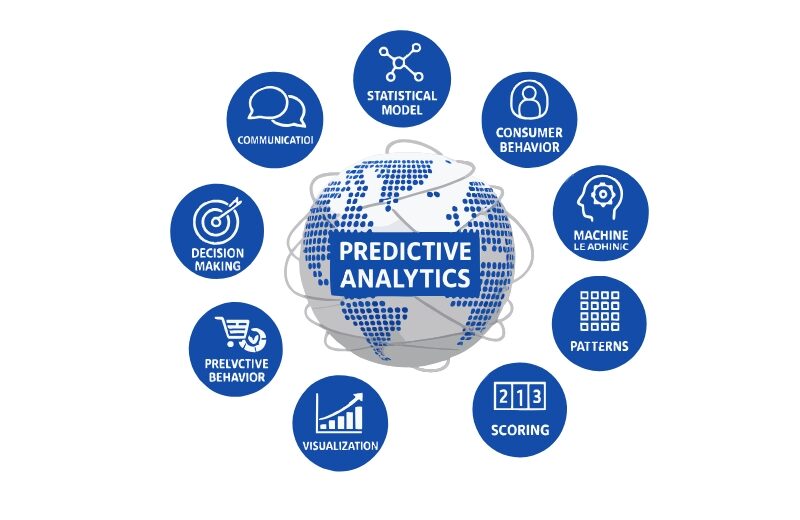Attrition Prediction
Share Now:
Employee turnover represents a persistent and significant drain on organizational resources, with early attrition standing out as especially costly.
Beyond these direct costs, the departure of new hires within the first year creates tangible disruptions to team dynamics and inevitably leads to project delays. Recognizing the multifaceted impact of this challenge,
Organizations are increasingly adopting predictive analytics as a proactive measure to assess and mitigate attrition risk during the initial hiring process.
The financial implications alone are substantial; research by the Society for Human Resource Management (SHRM, 2022) indicates that the expense of replacing an employee can reach up to 30% of their annual salary, with even higher figures observed for specialized positions.

Chhavi Tyagi
Data Analyst
Employee attrition arises from various factors, including better job opportunities, burnout, misalignment with company culture, or personal life changes.
While a certain level of turnover is natural and even beneficial, uncontrolled attrition can lead to –
- Increased recruitment and training costs
- Loss of valuable institutional knowledge
- Disruptions to projects and overall productivity
To effectively manage attrition, HR leaders require more than just exit interviews; they need foresight—the ability to anticipate which employees are likely to depart and which are likely to remain.
The Strategic Imperative of Predictive Attrition Analysis

Predicting attrition has evolved into a strategic imperative for organizations striving for sustainable growth and operational efficiency. By harnessing the power of data analysis and predictive modeling, businesses can gain crucial insights into potential reductions in their workforce or customer base.
This proactive stance enables the implementation of targeted retention strategies, moving away from reactive measures towards pre-emptive action.
Anticipating departures helps minimize the substantial costs associated with recruitment, onboarding, and lost productivity, ultimately bolstering stability and the bottom line.
Furthermore, understanding the underlying drivers identified through attrition prediction offers valuable insights for broader organizational or product improvements, fostering a more resilient and future-proof entity (Society for Human Resource Management) (SHRM, 2022).
Impact : Cost of Early Attrition

Cost of Early Attrition Breakdown
Source:
- SHRM (Society for Human Resource Management) research on cost of turnover
- Industry case studies and HR white papers quantifying early attrition impact
Reference:
The Power of Predictive Analytics in Forecasting Retention


Predictive analytics involves leveraging historical data to generate informed predictions about future events.
Within the context of attrition, this entails analyzing patterns in hiring and employment data to assess the likelihood of each employee’s continued tenure
This process involves constructing machine learning models that learn from historical data,
specifically the characteristics and behaviors of past employees who remained with the organization versus those who left.
The fundamental principle of attrition prediction lies in meticulously examining the wealth of information contained within past hiring data. Consider the subtle indicators within resumes, the nuances of application behavior, interview performance, assessment results, and even the initial stages of onboarding—
these can offer clues about a candidate’s potential long-term commitment. By carefully analyzing these patterns, organizations aim to gain foresight into which new hires are more likely to become long-term, valuable team members.

Top Examples of the Factors That Predict Retention
Source:
- Aggregated from data science research, HR analytics case studies, and LinkedIn reports on employee retention
- Commonly cited predictors in machine learning literature for HR (e.g., resume gaps, referral source, assessment scores)
Reference:
- Global Talent Trends Report. (LinkedIn Talent Solutions., 2023)
- HR analytics textbooks and professional resources
Attrition Prediction Models :
 By employing machine learning algorithms such as logistic regression, decision trees, and random forests, organizations gain a powerful tool for predicting employee retention.
By employing machine learning algorithms such as logistic regression, decision trees, and random forests, organizations gain a powerful tool for predicting employee retention.
These algorithms develop classification models by analyzing historical hiring data, differentiating between employees who stayed beyond a year and those who departed earlier.
The resulting models then generate a retention likelihood score for new applicants, providing actionable insights. For large employers in sectors with high turnover, such as call centers and retail,
This enables a strategic focus on candidates statistically more likely to stay, thereby reducing recruitment costs and enhancing workforce stability.
Notably, companies like IBM and Workday are actively exploring the integration of these predictive models into their hiring platforms, underscoring the growing recognition of their value in proactive turnover management (IBM HR Analytics., 2021) , (Workday., 2023)]
Attrition Prediction Model Use Case
Example :
To Understand the process in more detail let’s consider a use case of a company leverages data-driven hiring and retention strategies using machine learning.
The process begins with Candidate Data, including resumes, assessments, and interview scores, which provide a comprehensive view of each applicant’s qualifications and potential.
This data is then used in Model Training, where machine learning techniques like logistic regression and random forest are applied to identify patterns that predict employee behavior.

The model generates Predictions, classifying candidates as likely to “Stay” or “Leave.” This prediction is further refined into a Retention Risk Score, providing a numerical score (e.g., 0.92) that indicates the likelihood of a candidate staying with the company
Finally, this score informs HR Decision Support, where HR can customize onboarding, adjust offers, or make informed hiring recommendations, ultimately optimizing workforce stability and reducing turnover.

Attrition Prediction Model process:
Source:
- Conceptual design based on standard predictive modeling processes in HR analytics.
- Elements inspired by academic and industry sources including:
- IBM HR Analytics reports
- Workday People Analytics
- Common machine learning workflows used in hiring prediction models
Reference Examples:
- How IBM uses AI and analytics to support workforce planning. (IBM HR Analytics., 2021)
- Workday. (2023). Using data to predict and prevent employee turnover.
Attrition Prediction For New Organizations, Where To Start?
For small businesses with limited budgets, a costefficient approach to building a predictive hiring model involves leveraging free or low-cost solutions, starting with simple methods, and scaling gradually.
Businesses can begin with basic data collection, using easily accessible tools for storing and organizing candidate information.
Instead of investing in complex technology, they can start with straightforward models, such as basic statistical methods or decision rules, which are easier to implement and understand.
To overcome the challenge of limited historical data, they can use publicly available datasets, generate synthetic data, or apply general industry patterns to create an initial model.
Data can be collected systematically through structured forms, making it easier to analyze.
Over time, as the business collects more candidate and employee data, the model can be refined, integrating more advanced techniques like natural language processing for resume analysis or machine learning for prediction.
This gradual, scalable approach allows small businesses to adopt predictive hiring without overwhelming costs or complexity.
Proactive Strategies and Ethical Considerations in Attrition Prediction

The advantages of proactively forecasting attrition are significant and forward-thinking. HR teams can transition from reactive measures to designing personalized onboarding experiences for individuals identified as higher risk, strategically adjusting compensation packages to foster loyalty, and even refining job descriptions to attract candidates with a greater propensity to stay.
Critically, this foresight also supports more strategic workforce planning, ensuring that talent acquisition is dynamically aligned with future business growth and the cultivation of a thriving organizational culture.
However, this progressive approach necessitates a strong awareness of potential pitfalls. The ethical implications of using predictive models in human capital decisions are paramount, particularly the risk of unintentionally embedding historical biases within the algorithms.
Consider a scenario where a company’s past retention trends favored local talent; a seemingly neutral model could inadvertently disadvantage remote applicants, potentially hindering the organization’s ability to attract top talent in the increasingly common hybrid work environment.
However, this progressive approach necessitates a strong awareness of potential pitfalls. The ethical implications of using predictive models in human capital decisions are paramount, particularly the risk of unintentionally embedding historical biases within the algorithms.
Beyond predictive accuracy, data privacy emerges as a critical concern. Organizations have a responsibility to obtain explicit consent from candidates for their data to be used within these predictive systems. Transparency regarding the decision-making processes is not only good practice but a fundamental ethical obligation.
Consider a scenario where a company’s past retention trends favored local talent; a seemingly neutral model could inadvertently disadvantage remote applicants, potentially hindering the organization’s ability to attract top talent in the increasingly common hybrid work environment.
Furthermore, while these sophisticated tools offer valuable insights, it is crucial to recognize their limitations; they should augment, not replace, human judgment. A retention risk score should therefore serve as one informative data point within a comprehensive and human-centered hiring approach.
Conclusion: Embracing Data-Driven Strategies for Enhanced Retention

Ultimately, while absolute certainty in predicting employee tenure remains elusive, the intelligent application of hiring data offers a compelling. strategy for significantly mitigating early attrition The ability to identify retention indicators early in the the talent acquisition process directly translates into tangible benefits: reduced time-to-hire, a more engaged and satisfied workforce, and a demonstrable improvement overall workforce quality.
Through careful implementation, unwavering ethical considerations, and ongoing evaluation, attrition prediction presents a significant opportunity to revolutionize how organizations strategically approach long-term talent acquisition and (LinkedIn Talent Solutions., 2023)
References
(2021). IBM HR Analytics.
How IBM uses AI and analytics to support workforce planning. IBM.
(2023). LinkedIn Talent Solutions.
LinkedIn global talent trends report 2023.
SHRM. (2022). Society for Human Resource Management
Employee turnover rates and cost of hiring.
Workday. (2023). Workday People Analytics: Using data to predict and prevent employee turnover.
Workday Insights.
Good Data, Good Decisions
Build Smarter, Stronger Organizations.


